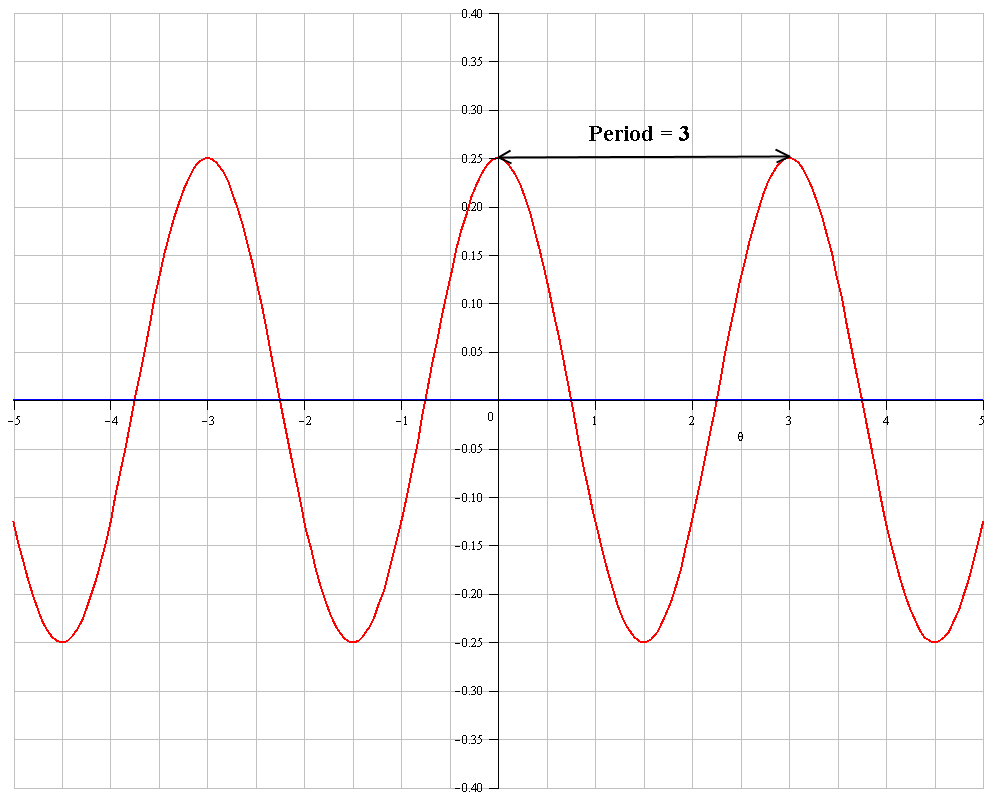It is 1:08 AM and I am trying to solve some problems but I am stuck :) Can I get some help please? Thanks!

1 Answer
See below.
Explanation:
If we express the cosine function in the following way:
Then:
a)
For given function we have:
We know from above that:
Hence:
b)
From above:
c)
The midline is a line that runs between the maximum and minimum values of the function.
These max/min values are the same as the amplitude, remember amplitude is given as an absolute value:
We can see from the function written in the form:
that there is no vertical shift. i.e
The graph confirms our findings:



